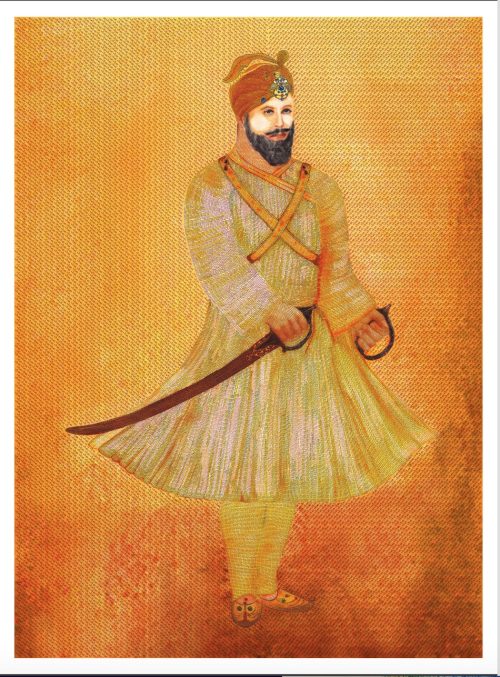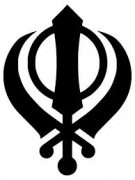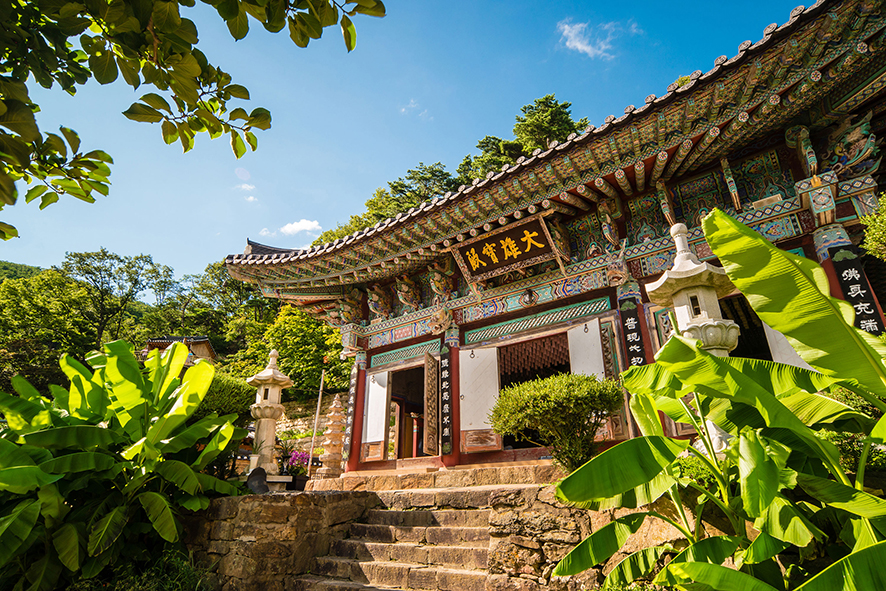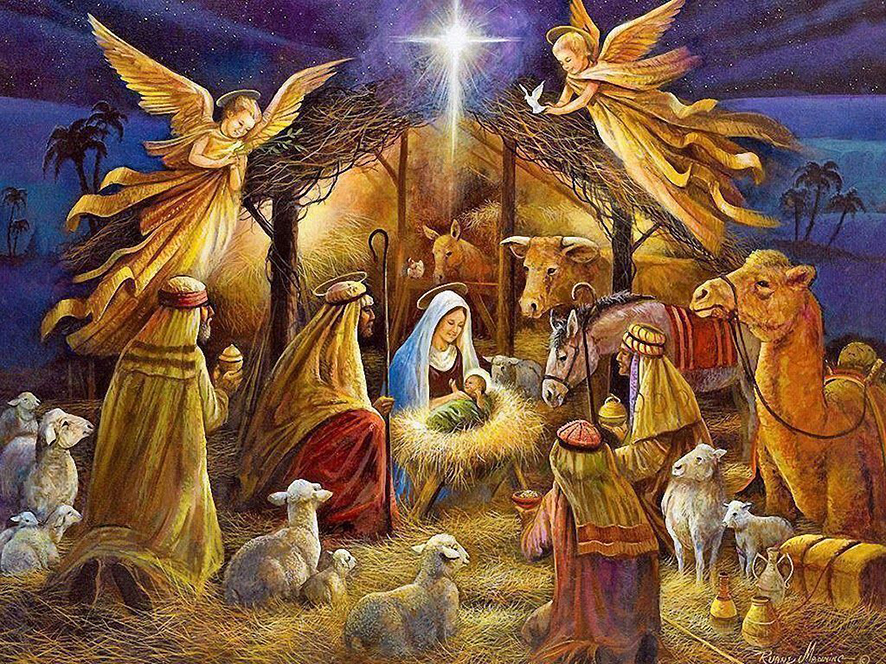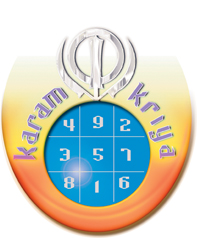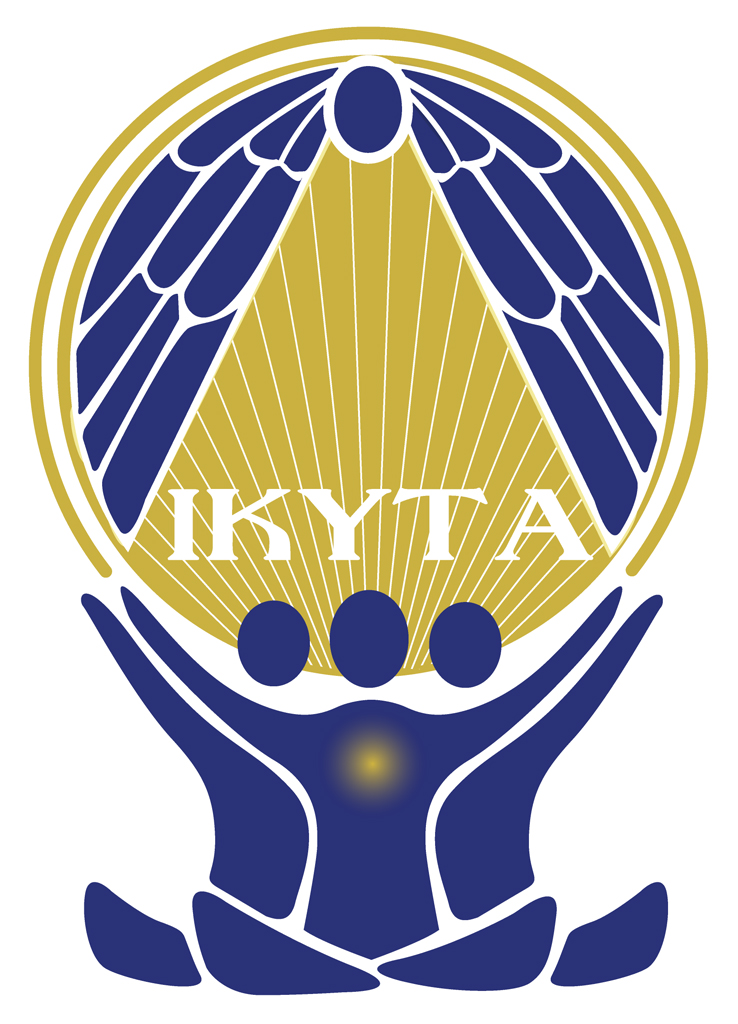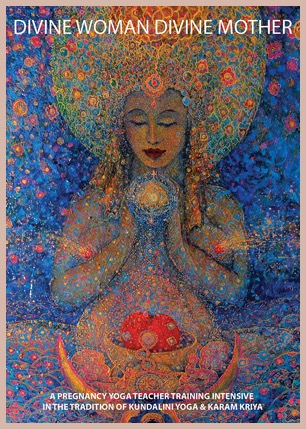Day 24, the last day of the Cherdi Kala Yoga Advent Calendar
Day 2+4 = 6 = Spiritual Warrior
In 1606, Jahangir had the fifth Sikh Guru Arjan Dev, the father of Guru Hargobind, tortured and martyred. During his lifetime, the fifth Guru had fully appreciated that in the times ahead, his community will need to defend itself and Dharma at large. With this in mind, he had his young son Hargobind trained and educated in Sanatan Shastar Vidiya. He ensured that other children too were put through martial training in preparation for what was to come.
When news arrived of his father’s passing and final instructions, Guru Hargobind immediately set about building a throne dedicated to the all-pervasive immortal One ‘Akal Purakh’. The revered Baba Buddha and Bhai Gurdas (Guru Arjan’s highly respected uncle and amanuensis) lent their support in the task. The ‘Akal Takht’ (immortal throne) was completed within a month on 15th June 1606. It also came to be known as ‘Akal Bunga’ (immortal fortress), or the ‘Takht Akal Bunga’ (fortress of the immortal throne).
Although initially a simple stone plinth, the Akal Takht was loaded with potent symbolism. Situated directly opposite the ‘Hari Mandir Sahib’ (also known as the Golden Temple) in Amritsar, it was intended as a symbol of defiance; erected higher than the imperial Mughal throne at Agra.
Sikhs gathered in large numbers facing the newly built Akal Takht in order to mark the sixth Guru’s formal accession ceremony that took place on 24th June 1606 (Numerologically interesting to see so many number 6!). Before addressing the assembly, the young Guru, attired as a prince, called for some of his personal weapons. He proceeded to recite the names of the previous Gurus, and selected two fine curved swords, a ‘Kaman’ (bow), and a quiver of arrows.
As the Sikhs brought the symbols of the previous Gurus before him, Guru Hargobind made it clear that he, in contrast to earlier Gurus, would mount a war horse and not resort to simply sitting as a peaceful holy man administering to the congregation on a ‘manji‘ (bedstead). Abandoning the ‘seli‘ (hat of silk cord) or ‘topi’ (silk cap) – traditional symbols of peace, he would wear a royal turban – the iconic symbol of a Kshatriya warrior.
When asked why he held two swords, the 16-year-old, whilst remembering his father’s words, explained:
“With one we will take authority as ‘miran ki miri‘ (king of kings). With the other, we shall achieve ‘piran ki piri‘ (spiritual supremacy). All those who come our way seeking refuge shall be saved. Those who oppose us shall lose both [temporal and spiritual authority].”
Gatka Instructional Video:
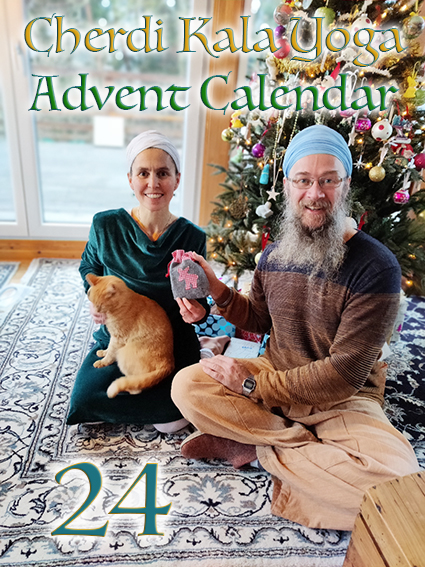

KUNDALINI YOGA
KARAM KRIYA
OTHER TRAININGS
PAST TRAININGS
CHERDI KALA YOGA
IS AFFILIATED WITH AND CERTIFIED BY:
Member of
> 3HO International
> 3HO Deutschland
> 3HO Schweiz
Member of
> the International Kundalini Yoga Teacher’s Association IKYTA
> the Dutch Kundalini Yoga Teachers Association KYN
Day 24, the last day of the Cherdi Kala Yoga Advent Calendar
Day 2+4 = 6 = Spiritual Warrior
In 1606, Jahangir had the fifth Sikh Guru Arjan Dev, the father of Guru Hargobind, tortured and martyred. During his lifetime, the fifth Guru had fully appreciated that in the times ahead, his community will need to defend itself and Dharma at large. With this in mind, he had his young son Hargobind trained and educated in Sanatan Shastar Vidiya. He ensured that other children too were put through martial training in preparation for what was to come.
When news arrived of his father’s passing and final instructions, Guru Hargobind immediately set about building a throne dedicated to the all-pervasive immortal One ‘Akal Purakh’. The revered Baba Buddha and Bhai Gurdas (Guru Arjan’s highly respected uncle and amanuensis) lent their support in the task. The ‘Akal Takht’ (immortal throne) was completed within a month on 15th June 1606. It also came to be known as ‘Akal Bunga’ (immortal fortress), or the ‘Takht Akal Bunga’ (fortress of the immortal throne).
Although initially a simple stone plinth, the Akal Takht was loaded with potent symbolism. Situated directly opposite the ‘Hari Mandir Sahib’ (also known as the Golden Temple) in Amritsar, it was intended as a symbol of defiance; erected higher than the imperial Mughal throne at Agra.
Sikhs gathered in large numbers facing the newly built Akal Takht in order to mark the sixth Guru’s formal accession ceremony that took place on 24th June 1606 (Numerologically interesting to see so many number 6!). Before addressing the assembly, the young Guru, attired as a prince, called for some of his personal weapons. He proceeded to recite the names of the previous Gurus, and selected two fine curved swords, a ‘Kaman’ (bow), and a quiver of arrows.
As the Sikhs brought the symbols of the previous Gurus before him, Guru Hargobind made it clear that he, in contrast to earlier Gurus, would mount a war horse and not resort to simply sitting as a peaceful holy man administering to the congregation on a ‘manji‘ (bedstead). Abandoning the ‘seli‘ (hat of silk cord) or ‘topi’ (silk cap) – traditional symbols of peace, he would wear a royal turban – the iconic symbol of a Kshatriya warrior.
When asked why he held two swords, the 16-year-old, whilst remembering his father’s words, explained:
“With one we will take authority as ‘miran ki miri‘ (king of kings). With the other, we shall achieve ‘piran ki piri‘ (spiritual supremacy). All those who come our way seeking refuge shall be saved. Those who oppose us shall lose both [temporal and spiritual authority].”
Gatka Instructional Video:


KUNDALINI YOGA
KARAM KRIYA
OTHER TRAININGS
PAST TRAININGS
CHERDI KALA YOGA
IS AFFILIATED WITH AND CERTIFIED BY:
Member of
> 3HO International
> 3HO Deutschland
> 3HO Schweiz
Member of
> the International Kundalini Yoga Teacher’s Association IKYTA
> the Dutch Kundalini Yoga Teachers Association KYN

